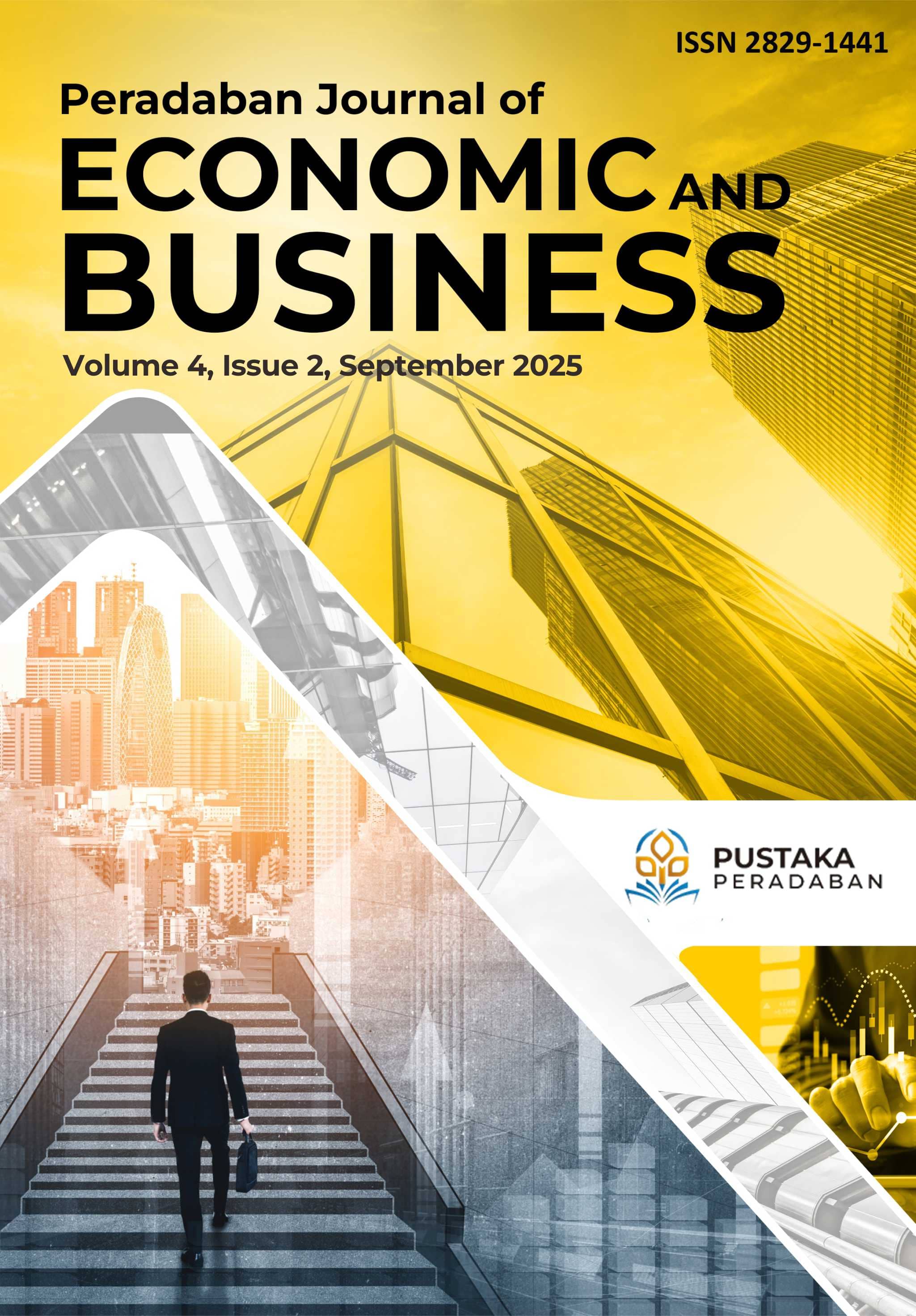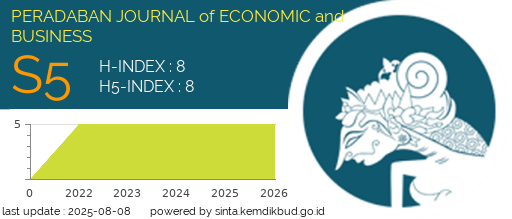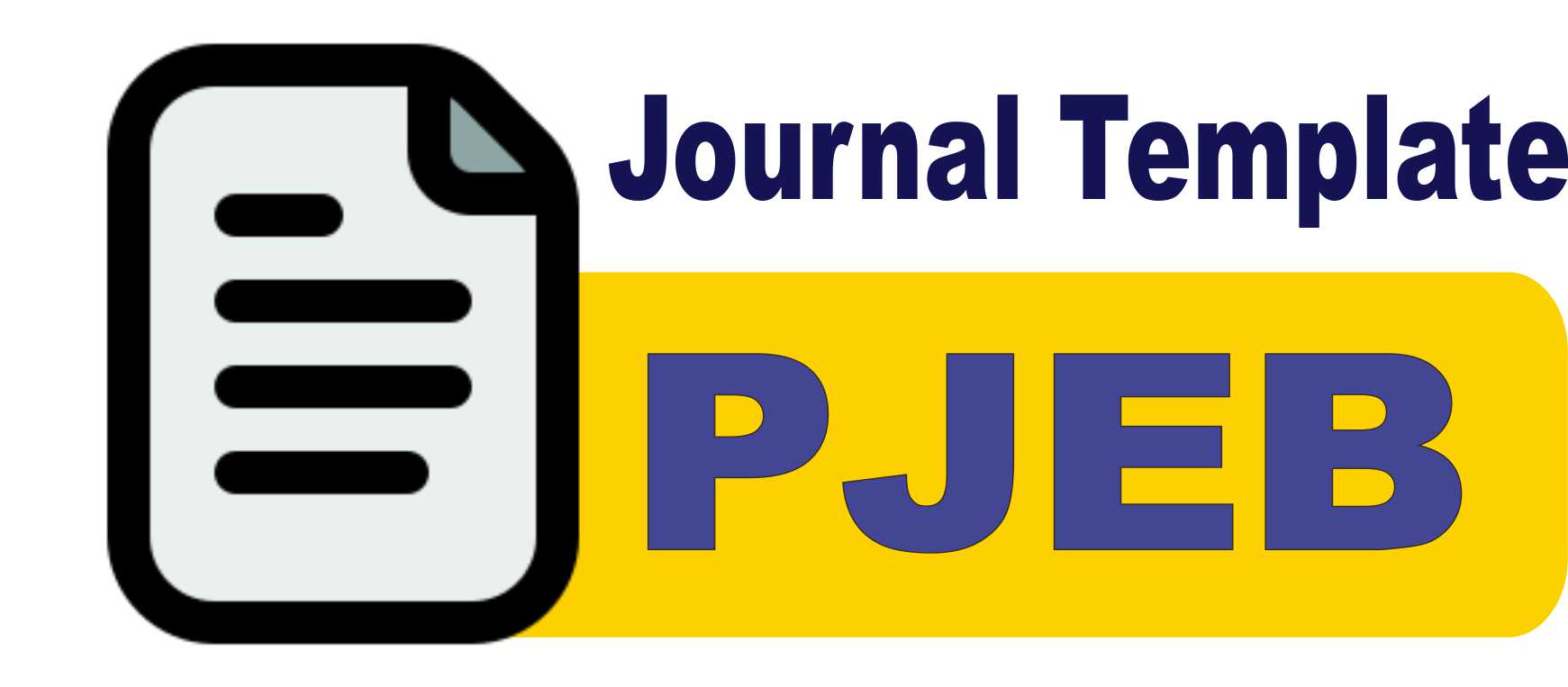Analisis Determinan Ekspor Kopi dan Teh ke Amerika Serikat Tahun 1994 – 2024
DOI:
https://doi.org/10.59001/pjeb.v4i2.531Keywords:
nilai ekspor, kopi, teh, nilai tukar riil, Indeks Persepsi Korupsi (IPK)Abstract
Coffee and tea are among Indonesia’s key export commodities, with the United States serving as one of the main markets. This study aims to analyze the factors influencing Indonesia’s coffee and tea exports to the United States during the period 1994–2024. The method employed is multiple linear regression using the OLS approach, with independent variables including the real exchange rate, destination-country prices, and the Corruption Perceptions Index as a proxy for institutional quality. The findings indicate that for coffee, both the real exchange rate and the corruption index significantly affect export values, while prices are not significant. In contrast, for tea, only the corruption index shows a significant effect. These results highlight the different market responses between coffee and tea in the United States. Theoretically, this study contributes to the literature on the determinants of agricultural exports, while practically, it provides insights for policymakers and exporters to enhance the competitiveness of Indonesia’s coffee and tea in international markets.
Kopi dan teh merupakan komoditas ekspor penting Indonesia dengan Amerika Serikat sebagai salah satu pasar utama. Penelitian ini bertujuan menganalisis faktor-faktor yang memengaruhi nilai ekspor kopi dan teh ke Amerika Serikat periode 1994–2024. Metode yang digunakan adalah regresi linier berganda dengan pendekatan OLS, dengan variabel independen meliputi nilai tukar riil, harga di negara tujuan, serta Indeks Persepsi Korupsi sebagai proksi kualitas institusi. Hasil penelitian menunjukkan bahwa pada komoditas kopi, nilai tukar riil dan indeks korupsi berpengaruh signifikan terhadap nilai ekspor, sedangkan harga tidak signifikan. Sementara itu, pada komoditas teh hanya indeks korupsi yang berpengaruh signifikan. Temuan ini menegaskan adanya perbedaan respon pasar antara kopi dan teh di Amerika Serikat. Secara teoretis, penelitian ini memperkaya literatur mengenai determinan ekspor komoditas pertanian, sedangkan secara praktis memberikan masukan bagi pembuat kebijakan dan eksportir untuk meningkatkan daya saing kopi dan teh Indonesia di pasar internasional.
References
Badan Pusat Statistik. Badan Pusat Statistik. Diakses dari https://www.bps.go.id
Barsua, N. P. E. U., Harum, N. S., Boeaya, M. A., & Gurusinga, W. U. (2024). Analisis determinan nilai ekspor kopi Indonesia (Dampak nilai tukar rupiah, investasi asing langsung dan harga kopi dunia). JIA (Jurnal Ilmiah Agribisnis): Jurnal Agribisnis dan Ilmu Sosial Ekonomi Pertanian, 9(4), 327–336. https://doi.org/10.37149/JIA.v9i4.1338
Borensztein, E., De Gregorio, J., & Lee, J. W. (1998). How does foreign direct investment affect economic growth? Journal of International Economics, 45(1), 115–135. https://doi.org/10.1016/S0022-1996(97)00033-0
Bustaman, A., Indiastuti, R., Budiono, B., & Anas, T. (2022). Quality of Indonesia’s domestic institutions and export performance in the era of global value chains. Journal of Economic Structures, 11, Article 35. https://doi.org/10.1186/s40008-022-00293-5
CEPII. Centre d'Études Prospectives et d'Informations Internationales. Diakses dari https://www.cepii.fr
Cho, D. S., & Moon, H. C. (2003). From Adam Smith to Michael Porter: Evolusi teori daya saing. Salemba Empat.
Dornbusch, R. (1988). Open economy macroeconomics (2nd ed.). New York: Basic Books.
Federal Reserve Bank of St. Louis. Federal Reserve Economic Data (FRED). Diakses dari https://fred.stlouisfed.org
International Monetary Fund. (2022). Economic freedom and trade outcomes (IMF Working Paper No.2022/001). https://www.elibrary.imf.org/view/journals/0012022/001/article-A999-en.xml
International Trade Centre. Trade Map: Trade statistics for international business development. Diakses dari https://www.trademap.org
Krugman, P. R., & Obstfeld, M. (2009). International economics: Theory and policy (8th ed.). Boston: Pearson Addison Wesley.
Lisdiani, I., Nikensari, S. I., & Iranto, D. (2022). The effect of price, exchange rate, and consumption on Indonesian rubber exports by main destination country. Jurnal Pendidikan Ekonomi, Perkantoran, dan Akuntansi, 2(2), 113–124. https://journal.unj.ac.id/unj/index.php/jpepa/article/view/30073
Maghfira, R., & Nalufar, F. (2023). Pengaruh nilai tukar dan inflasi terhadap ekspor komoditas buah-buahan di Indonesia. Jurnal Ekonomi Pertanian Unimal, 6(1), 29–41. https://ojs.unimal.ac.id/index.php/pertanian.
Méon, P.-G., & Weill, L. (2010). Is corruption an efficient grease? World Development, 38(3), 244–259. https://doi.org/10.1016/j.worlddev.2009.06.004.
Nguyen, L. T., & Tran, H. M. (2022). An analysis of factors impacting Vietnam's coffee exports: An approach from the gravity model. The Journal of Asian Finance, Economics and Business, 9(3), 123–131. https://doi.org/10.13106/jafeb.2022.vol9.no3.123.
North, D. C. (1990). Institutions, institutional change and economic performance. Cambridge: Cambridge University Press.
Öztürk, F., & Topçu, Y. E. (2024). The effect of economic freedom on export sophistication in OECD countries. Fiscaoeconomia, 8(1), 126–148.
https://doi.org/10.25295/fsecon.1345968.
Pohan, M. A. Y., & Adyanti, A. S. (2024). Determinants of Indonesia’s plantation commodities trade flows with ASEAN: Insights from a gravity model approach. Agriecobis (Journal of Agricultural Socioeconomics and Business), 7(2), 98–107. https://doi.org/10.22219/agriecobis.v7i02.34907.
Sihombing, F. N., Silaban, R., & Manik, W. (2021). Identifying the factors of coffee export from North Sumatra to the United States, Malaysia, and Japan. Caraka Tani: Journal of Sustainable Agriculture, 36(2), 310–318.
https://jurnal.uns.ac.id/carakatani/article/view/43357
Tinbergen, J. (1962). Shaping the world economy: Suggestions for an international economic policy. New York: The Twentieth Century Fund.
The Global Economy. TheGlobalEconomy.com: Economic indicators for over 200 countries. Diakses dari https://www.theglobaleconomy.com
Transparency International. Corruption Perceptions Index. Diakses dari https://www.transparency.org
Tyas, H. P. (2022). Analisis ekspor Indonesia tahun 1990–2019. Transekonomika: Akuntansi, Bisnis dan Keuangan, 2(2), 1–16. Retrieved from
https://transpublika.co.id/ojs/index.php/Transekonomika/article/view/114/92
Wibowo, D. A., Nuryartono, N., Rifin, A., & Sahara, S. (2021). Analisis perdagangan ekspor kopi Indonesia di pasar internasional. Jurnal Ekonomi dan Kebijakan Pertanian, 9(1), 13–24. https://doi.org/10.29244/jekp.9.1.13-24
World Bank. World Development Indicators. Diakses dari https://data.worldbank.org
World Integrated Trade Solution (WITS). World Integrated Trade Solution. Diakses dari https://wits.worldbank.org
Downloads
Published
How to Cite
Issue
Section
License
Copyright (c) 2025 Salsabila Salsabila

This work is licensed under a Creative Commons Attribution-NonCommercial-ShareAlike 4.0 International License.





